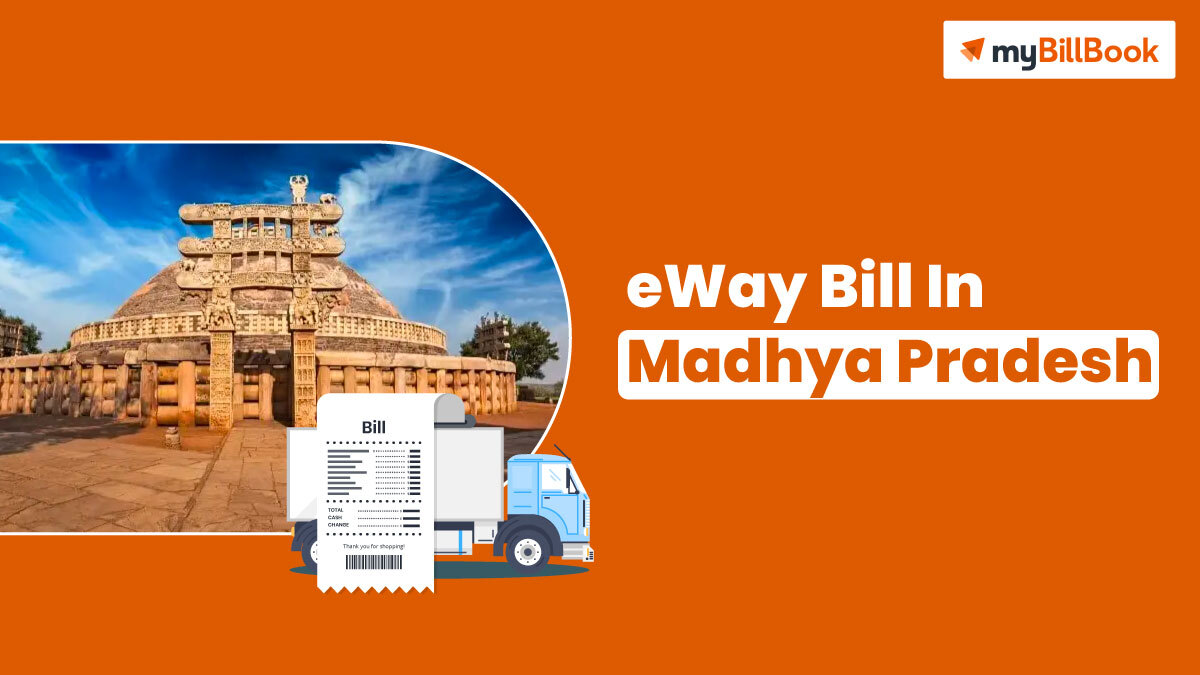eWay bill distance calculation is a crucial step in eWay bill generation as it is critical for determining the validity of an eway bill. The e-way bill distance must be accurately calculated to avoid penalties or compliance issues.
An eway bill or electronic way bill is a mandatory document that must be carried while moving goods worth more than INR 50,000 within the country.
The validity of an e-way bill or the number of days an eway bill is valid once generated depends upon the mode of transport and the distance to be travelled. This article helps you calculate eway bill distance or eway bill PIN to PIN distance and thus helps you to determine the validity of an e-way bill and generate error-free eway bills.
Why Calculate eWay Bill Distance?
eWay bill distance is directly related to the validity of an eway bill. This means the validity of an e-way bill depends on the distance between the place of origin and the place of delivery of the consignment. The longer the distance, the higher the validity of an eway bill.
Hence, accurate calculation of an e-way bill is essential to determine the exact validity of an e-way bill. It also ensures that the transporter has adequate time to complete the journey legally. Also, miscalculating the distance, either intentionally or accidentally, is illegal and can lead to fines or rejection of the eway bill.
eWay Bill Distance Calculation Explained
There are two ways to determine the eway bill distance.
- Calculate eway bill distance while generating eway bill
- PIN to PIN distance search page on ewaybill.gst.gov.in
Calculate e-Way Bill Distance While Generating Way Bill
During e-way bill generation, you can either enter the exact or approximate distance between the source and destination locations. You can either calculate it on your own or use the e-way bill framework that includes the automatic distance calculation feature.
While generating eway bill, enter the source and destination PIN codes in the designated columns, and the system suggests the approximate distance based on the shortest possible route. The eway bill portal is integrated with Google Maps, automatically indicating the distance between the source and destination based on the entered PIN codes.
Using the tool available on eway bill website is a recommended method to determine eway bill distance as it is consistent in distance reporting and avoids discrepancies that could lead to compliance issues.
PIN to PIN Distance Calculator
Before generating an eway bill, if you would like to calculate the distance between the source and destination station of a consignment, you can use the free tool provided by the eway bill official portal.
Follow these steps to calculate the PIN to PIN distance for eway bill generation.
- Visit eway bill official website at https://ewaybillgst.gov.in/
- From the top menu, go to ‘Search’ and select ‘Pin to Pin Distance’ option.
- The Pin to Pin Distance Search page appears. You can also hit the link to go to the page.
- On the page, enter ‘Dispatch From Pincode’ and ‘Ship to Pincode’, enter the Captcha and click on ‘Go’.
- The approximate distance between the pin codes will be displayed.
During physical inspections, the authorities can validate the entered PIN to PIN distance. If there are any discrepancies in the distance entered, the transporter may face penalties. Hence, the transporter must ensure the distance entered is accurate and reflects the actual route taken.
eWay Bill Validity Based on Distance Calculation
Once the approximate distance is calculated, the eway bill system calculates the validity of the eway bill based on the distance.
The standard rule for the e-way bill’s validity is as follows:
- 1 day for every 200 km for regular cargo vehicles.
- 1 day for every 20 km for Over-Dimensional Cargo (ODC) vehicles.
The validity of an eway bill depends on the distance between the supplier and the recipient and not between the transporter and the recipient.
At present, an eway bill can be generated for a maximum distance of 3,000 km. For every additional 200 km or a part of it, one day is added to the validity of an eway bill.
For instance, if the approximate distance between the source and destination stations is 430km, the validity of the eway bill for that distance is 1+1+1 = 3 days (200km+200km+20km).
Once entered, the approximate distance cannot be edited while generating the eway bill. To be on a safer side, you can enter a 10% increase over the auto-calculated distance.
Extending the Validity of an eWay Bill
The validity of an eway bill can be extended if the consignment doesnt reach the destination within the validity period due to valid reasons.
The e-way bill’s validity period may need to be extended for a variety of reasons, including:
- Change of transport vehicle
- Vehicle break down
- Any additional factor that causes a delay in the shipment of vehicles.
Only the current assigned transporter of the e-way bill has the authority to extend the validity of an eway bill or the supplier if the transport is outsourced.
How to Extend Validity of an e-Way Bill
Below are the detailed steps on how to extend the validity of e-way bills
- Login to eway bill account using your username, password, and captcha code.
- On the dashboard’s left side, under the “E-waybill” option, select “Extend Validity.”
- Enter the e-way bill number whose validity needs to be extended.
- To extend the validity, answer “Yes.”
- Enter the justifications and comments for the extension, then render the vehicle details to proceed.
- Choose the appropriate cause from the drop-down menu, then type the required notes.
- You need to reenter the Approximate Distance to Destination, Mode and/or Vehicle data, Place of Dispatch (From Place), and Place of Delivery (To Place). Now, the system will grant additional validity based on the required trip distance.
The previous e-way bill number will be replaced once the validity is extended. There are currently no limitations on how frequently one may prolong the validity term.
FAQs on E-way bill distance limit
Is an e-way bill required for a 40 kms distance?
If the distance between a consignor’s location and a transporter’s location is less than the minimum distance necessary for an e-way bill, i.e., 50 km, the specifics of the conveyance do not need to be stated.
What is PIN to PIN distance calculation in the e-way bill system?
PIN to PIN distance calculation refers to the automated process used by the e-way bill portal to calculate the shortest distance between the source and destination based on the PIN codes of both locations.
Can I modify the system-calculated distance for the e-way bill?
Yes, you can slightly modify it. The e-way bill system allows a 10% tolerance over the suggested distance. For example, if the system suggests a distance of 300km, you can increase it to 330km to account for road diversions or route deviations.
What happens if I enter an incorrect distance in the e-way bill?
Entering an incorrect distance, whether intentionally or unintentionally, can lead to non-compliance and penalties during physical checks by authorities.
Can I generate multiple e-way bills for different destinations using PIN to PIN distance calculation?
Yes, if a transporter is delivering to multiple locations, each delivery point’s distance must be calculated separately using its specific PIN code. The e-way bill system allows multiple consignments, and the distance for each should be entered accurately.
Does the eway bill system calculate distance for both inter-state and intra-state transport?
Yes, the PIN to PIN distance calculation is applicable for both inter-state and intra-state transportation of goods.
Who can extend the validity of e way bill?
Only the active transporter can extend the validity of an eway bill. The generator may update the validity if a transporter is not assigned.
What is the e-way bill kilometre limit?
The minimum distance necessary for an e-way bill is 50 km, while the maximum e-way distance limit is 3,000 km.
How many times can we extend the validity of an e-way bill?
8 hours before and 8 hours after the eway bills expiration deadline, the validity may be extended. As of now, there are no limitations on the number of times to extend the validity.








